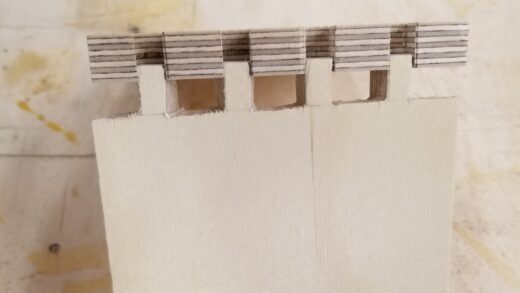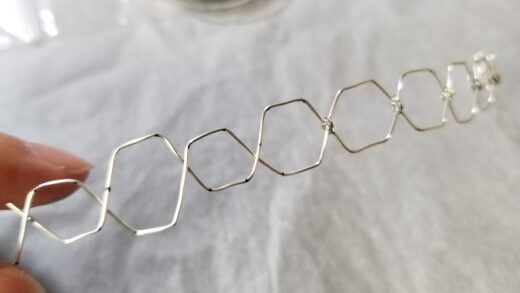The value of diamonds mainly comes from the premium generated by monopoly and marketing, and the mining and cutting costs account for only a small part. In the great depression, diamonds can hold their value is a fact but also a lie based on monopoly.
”Diamonds are used in engagement rings. The practice is documented among European aristocracy as early as the 15th century, though ruby and sapphire were more desirable gemstones. The modern popularity of diamonds was largely created by De Beers Consolidated Mines, which established the first large-scale diamond mines in South Africa. Through an advertising campaign beginning in the 1930s and continuing into the mid-20th century, De Beers made diamonds into a key part of the betrothal process and a coveted symbol of status. The diamond’s high value has been the driving force behind dictators and revolutionary entities, especially in Africa, using slave and child labor to mineblood diamonds to fund conflicts. Though popularly believed to derive its value from its rarity, gem-quality diamonds are quite common compared to rare gemstones such as alexandrite, and annual global rough diamond production is estimated to be about 130 million carats (26 tonnes; 29 short tons)[1]” https://en.wikipedia.org/wiki/Diamond_(gemstone) Although diamonds were recorded as wedding rings in the 15th century, it was only the personal behavior of several nobles who loved diamonds, not the popularity and tradition at that time. The concept of diamond ring as a wedding necessity originated from the marketing of De Beers in the 19th century. So this is a modern marketing concept, not a tradition.De Beers used his monopoly position to create two lies: one is that diamonds are rare, and the other is that diamonds are universally recognized tokens of wealth, power, and romance.
Their words (artists, art critics) are more difficult to read than economic papers. They either don’t speak or speak in an obscure way. Should interpretation also rely on perception like works of art?
Perhaps, the expression of feelings is not easy, it is difficult to express clearly. Perhaps vague sentences can produce a sense of mystery and a sense of high level.
I admire three kinds of people. The first kind of people are those who can insight into problems and form their own theories for criticism. The second kind of people are those who not only criticize, but also propose feasible solutions. The third kind of people are those who have insight into the world and are willing and able to put solutions into practice.
In my daily life, I often have some scattered views. When I read some articles and encounter resonant sentences, I feel very happy. In particular, they are expressed more organized and logically.
I like works of art with ideas, but I refuse works whose artistry is weakened by ideas. The person who created this work is neither a first-class artist nor a first-class philosopher. We should guard against the rape of philosophy(maybe just rhetoric) on art.
Ted Noten: I don’t understand why jewelry is not accepted by art people or even seen as an equivalent. It used to be accepted in the early 20th century (think about Lalique and Fabergé). At that time there was no hierarchy, and painters, musicians, dancers, makers, craftsman, etc. had a dialogue. Think about the fantastic creator and entrepreneur Diaghilev. In some ways we lost the intellectual discourse, and in some ways it is understandable. A craftsman likes to make, likes to have his fight with the material and not with concepts. I make my own stories and my own political or humanistic comments or even my own wonderings, and in that way I am an artist.
I like this explain about art jewelry coz craft, design and art are important to me.
“So then: most jewelers would agree that Contemporary Jewelry is a fast-evolving profession at a crossroad between craft, design, and art, currently ridged by identity concerns.”
His style and writing strategies are also implosive (i.e., working against previously important distinctions), combining material from strikingly different fields, studded with examples from the mass media and popular culture in an innovative mode of postmodern theory that does not respect disciplinary boundaries.
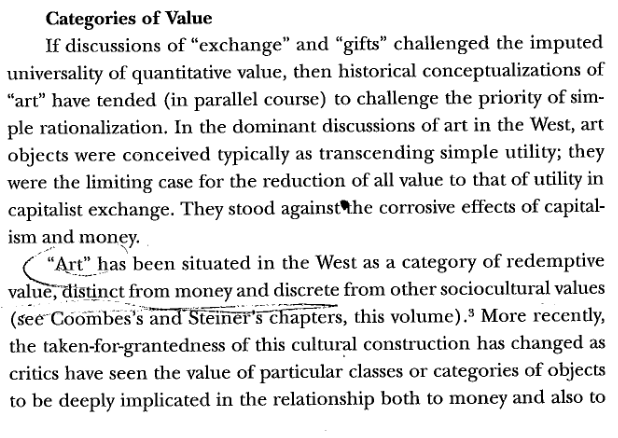
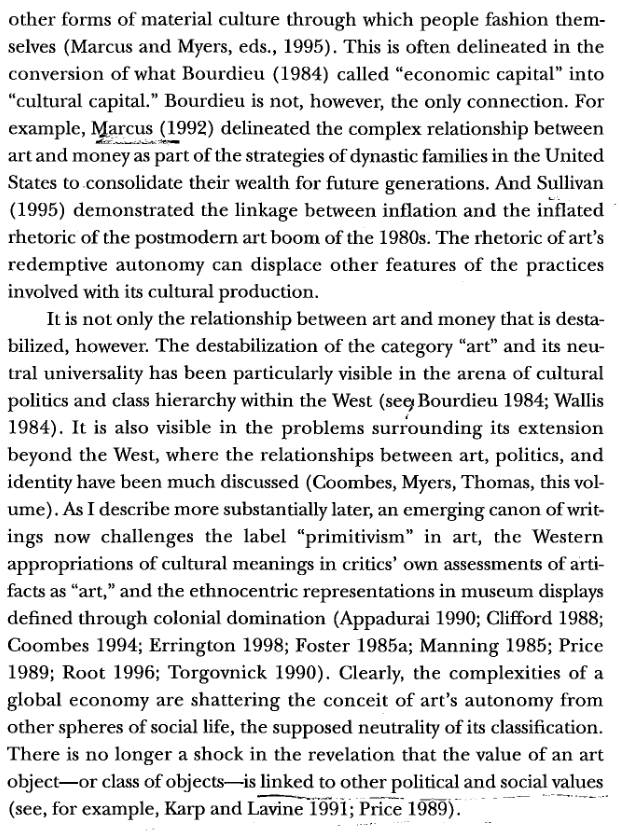
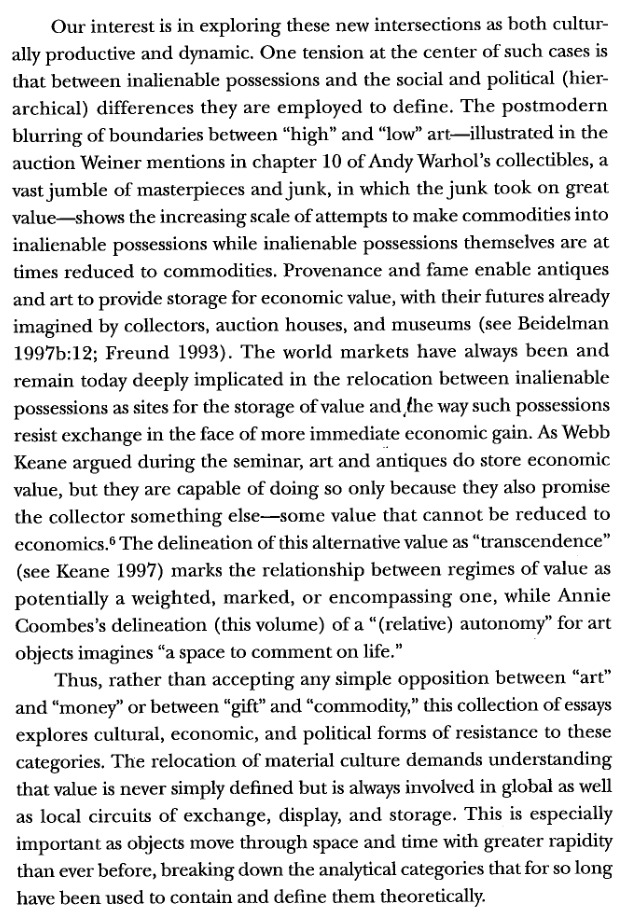

partial understanding
“This text takes a fresh look at the relationship between material culture and exchange theory. It explores ways in which art objects are used to construct identity and cultural difference, and explains how people actually use things – items that are at once concrete and symbolic.”
“The discourses of art engage two of the principal foci of contemporary concern about cultural difference: ethnic or cultural identity and class. Four central themes occupy most of the contemporary writing about art and difference relevant to our reconsideration.”
When I searched for works of art about class, I found that class contradiction is an important topic, but there are few works to express it. Freedom of speech is freedom within the framework, especially when art is funded by the upper class.
We need criticism, but criticism alone cannot achieve anything.
Why can’t my works express nature, even though I clearly like nature. Because I don’t live with nature for a long time. What I think and see every day is not it, but this modern society. Those primitive arts, although not too many skills, are full of vitality. Compared with the keen observation of the ancients, I am blind.
Making is human nature. There is no reason for making, just as the man in the cave must draw. Works do not need to be sold, displayed or recognized. I once said I like to be a bystander, but Mr. He said I still have to participate.
I like Walden and Thoreau. I think Thoreau is a man who lives in truth. He advocates simple life and opposes modern material civilization and put his ideal life into practice. He created his own life with sweat and hands and refused to pay taxes. He refused to exploit or be exploited by others. Even though I agree that people should live with nature and that industrial society is anti human, I don’t have the courage and ability to give up convenient, warm and comfortable urban life. We all live in a glass greenhouse and feel the nature by relying on the artificial landscape.
To a certain extent, Thoreau is sun and truly socereign.
“The term “symbolic exchange” was derived from Georges Bataille’s notion of a “general economy” where expenditure, waste, sacrifice, and destruction were claimed to be more fundamental to human life than economies of production and utility (1988 [1967]). Bataille’s model was the sun that freely expended its energy without asking anything in return. He argued that if individuals wanted to be truly sovereign (e.g., free from the imperatives of capitalism) they should pursue a “general economy” of expenditure, giving, sacrifice, and destruction to escape determination by existing imperatives of utility.” https://plato.stanford.edu/entries/baudrillard/
https://craftspace.co.uk/wac-shanewaltener/ When I saw Shane’s common agency projects, I thought of Thoreau. I was moved by “become a commoner”.
We live in the abstract, symbolic and hyperreality. When we mention flowers, we think of love, flower language and goods behind the window, rather than bending down to smell, reaching out to touch and pick.
The people at the bottom are screws that can be replaced at any time and consumables that can be discarded at will. Compared with the rise of great powers, I am more concerned about the lives of civilians.

